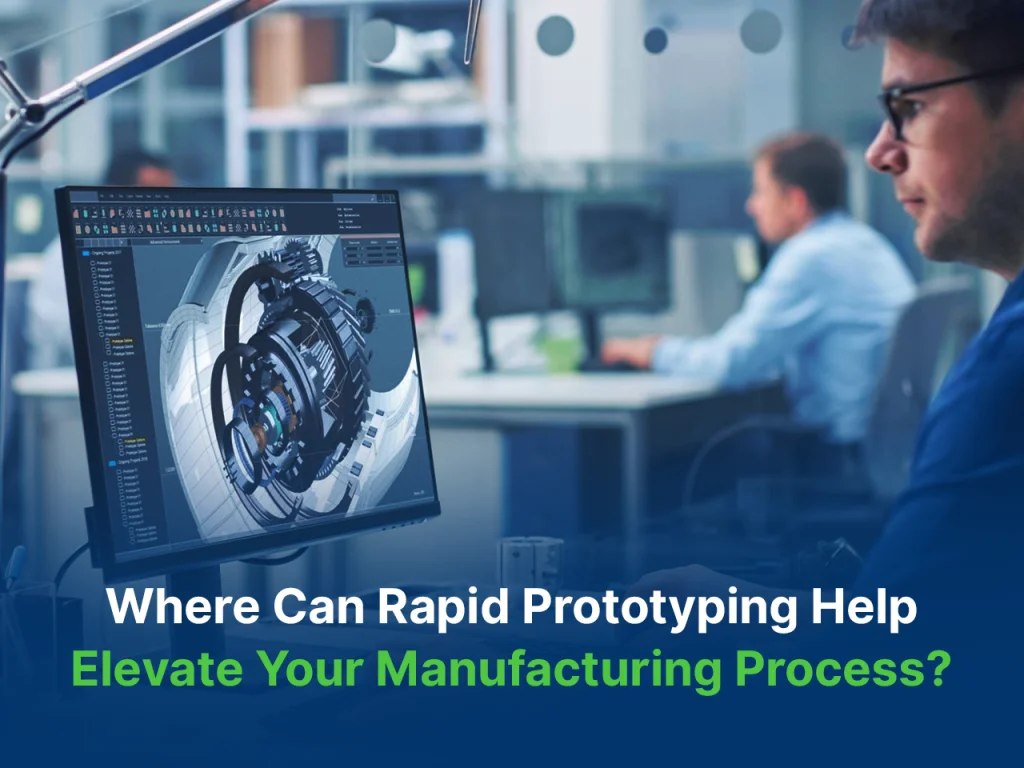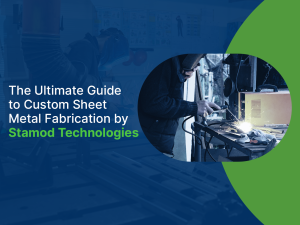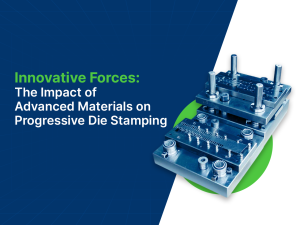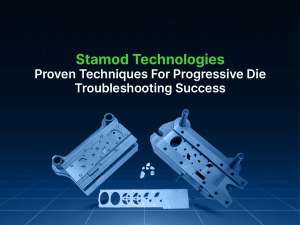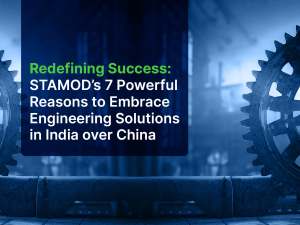Rapid prototyping is a technology-driven process used in product development to quickly create physical prototypes or models of a design concept. These prototypes provide tangible representations of an idea, allowing designers, engineers, and stakeholders to evaluate and test the concept before moving forward with full-scale production. Rapid PrototypingIt is a versatile and invaluable tool in the product development process, enabling designers and engineers to bring their ideas to life quickly, test them, and refine them with ease before committing to full-scale production.
Rapid prototyping is characterised by its speed, enabling the creation of prototypes in a short amount of time, typically using techniques like 3D printing, CNC machining, or other advanced manufacturing methods. It is an iterative process that supports design refinement and cost-effective development.
Key Characteristics of Rapid Prototyping
Here are some of the key characteristics of rapid prototyping:
- Speed
As the name itself suggests, rapid prototyping is characterised by its speed. It enables the creation of prototypes in a matter of hours or days, compared to traditional methods that might take weeks or months.
- Cost Efficiency
Rapid prototyping proves cost-effective by eliminating the necessity for costly molds or tooling that conventional manufacturing methods typically demand. This advantage is especially prominent when dealing with small production quantities or customised products.
- Iterative design
Rapid prototyping promotes an iterative design approach, where designers can produce a prototype, conduct testing, collect feedback, implement enhancements, and then iterate through this cycle until they attain the desired outcome.
- Complex Geometrics
Rapid prototyping allows for the creation of complex and intricate designs that might be difficult or impossible to achieve using traditional manufacturing methods.
- Variety of Techniques
There are various rapid prototyping techniques, including 3D printing, CNC machining, laser cutting, and more. The choice of technique depends on factors like the desired material, level of detail, and available equipment.
- Applications
Rapid prototyping is used in a wide range of industries, including product design, aerospace, automotive, healthcare (for creating custom implants and prosthetics), architecture, and more.
- Materials
Depending on the chosen rapid prototyping technique, various materials can be used, including plastics, metals, ceramics, and even biological materials in the case of bioprinting.
Evolution of Rapid Prototyping
The evolution of rapid prototyping has been marked by significant advancements in technology and applications over the years.
- Early Development/ Emergence in 1980s
Rapid prototyping, also known as 3D printing, had its origins in the 1980s. The first techniques, like Stereolithography (SLA), were primarily used for creating prototypes and models in industries like aerospace and automotive.
- Wider Applications
In the 1990s, rapid prototyping expanded into other industries, such as healthcare and consumer products. This period saw the development of new 3D printing technologies like Fused Deposition Modeling (FDM) and Selective Laser Sintering (SLS).
- Reduced Costs
As technology advanced, the cost of 3D printers decreased, making them more accessible to small businesses and even hobbyists. This democratisation of rapid prototyping spurred innovation and creativity.
- Advancements in Materials
Materials used in rapid prototyping expanded to include metals, ceramics, and biocompatible substances, allowing for the creation of more functional and complex prototypes.
- Mass Production
Rapid prototyping has extended its reach beyond just prototyping, entering the realm of small-batch production for parts and products, causing significant disruptions to conventional manufacturing methods.
- Bioprinting and Biomedical
In the field of medicine, bioprinting emerged as a specialized application of rapid prototyping. It involves printing with living cells, offering the potential to create tissues and even organs for transplantation.
- Integration with Industry 4.0
Rapid prototyping is an integral part of the Industry 4.0 revolution, where it plays a crucial role in creating customized, on-demand products and streamlining manufacturing processes.
- Future Aspects
The evolution of rapid prototyping continues, with ongoing research into new materials, faster printing techniques, and applications in fields like construction and space exploration.
The evolution of rapid prototyping reflects its transformation from a niche technology into a pivotal element of modern manufacturing and product development.
Catalysing Innovation: The Crucial Need for Rapid Prototyping in Product Development
The need for rapid prototyping arises from several key factors in product development and manufacturing like faster development, reduced costs, iterative design, complex geometries, customisation, risk mitigation, innovation and creativity in various industries, making it a crucial tool in modern development and manufacturing. We at Stamod Technologies are specialised in providing cutting edge rapid prototyping services.
Our team with experts leverages state-of-the-art rapid prototyping technologies and industry-leading expertisetechniques to transform your design concepts into tangible prototypes quickly and efficiently. Whether you need prototypes for product validation, design refinement, or small-batch production, our dedicated professionals are here to meet your specific needs and ensure your project’s success.
Prototype Design: Fast-track your Product Development
Prototype design in rapid prototyping is a crucial phase of the product development process. Explore groundbreaking product development through our state-of-the-art Prototype Design services. Our adept engineers harness 3D computer-aided design (CAD) data to craft precise physical models of extrusions, facilitating easy testing for design functionality. Our extensive array of RP techniques, spanning Stereolithography (SLA), Selective Laser Sintering (SLS), and Fused Deposition Modeling (FDM), caters to your distinct requirements. Whether it’s intricate geometries, internal structures, or cost-effective solutions you seek, we’ve got you covered. Embrace innovation and maintain a competitive edge with our unparalleled Prototype Design service.
At Stamod Technologies, we recognize that prototype design within the realm of rapid prototyping is a pivotal phase in the product development journey. Here’s an insightful overview:
- Conceptualisation
Our journey begins with the conceptualisation of your idea or product. Our collaborative team of designers and engineers works diligently to outline the objectives, functionality, and precise specifications of your prototype.
- 3D Modelling
We seamlessly transition to the next step by creating a meticulous 3D digital model of your prototype using cutting-edge computer-aided design (CAD) software. This digital representation serves as the foundational blueprint for your physical prototype.
- Rapid Prototyping Technique
We meticulously select the most suitable rapid prototyping technique for your project, taking into account factors such as the desired material, intricate details, and the equipment at our disposal. Our repertoire includes versatile techniques like 3D printing, CNC machining, injection molding and precision laser cutting.
- Material Selection
The choice of the right material for rapid prototyping is paramount. Different rapid prototyping techniques demand specific materials, whether it’s plastics, metals, ceramics, or more. Our material selection process is geared towards optimizing the prototype’s properties, including strength and durability.
- Prototyping
The heart of the matter lies in the actual prototyping stage. We employ the chosen technique with precision and expertise to craft your physical prototype. Your CAD model comes to life, whether through layer-by-layer construction (as seen in 3D printing) or precise machining in the case of CNC.
- Testing and Iteration
Once the prototype takes form, it undergoes rigorous testing and evaluation. Our team of experts diligently collects data, assesses functionality, and identifies areas for improvement. This phase often involves iterative design, where we make necessary modifications to elevate the prototype’s performance.
- Finalisation
After several rounds of refinements and iterations, your prototype evolves into a stage where it impeccably aligns with your envisioned objectives and specifications. It stands as a tangible proof of concept, laying the foundation for further development or production.
- Documentation
Comprehensive documentation of your prototype’s design, materials, and testing results is an indispensable part of our process. This documentation serves as your guiding compass for the seamless transition from prototype to full-scale production.
Prototype design within the realm of rapid prototyping is a dynamic, innovative process we thrive in, enabling us to resolve challenges efficiently and bring your product to market with reduced risks and costs.
3 Essential Rapid Prototyping Techniques
The various rapid prototyping techniques are as follows:
Stereolithography (SLA):
Principle: SLA is an additive manufacturing process that uses a laser to solidify layers of photopolymer resin. It operates on the principle of photopolymerisation, where UV light is used to cure or harden liquid resin layer by layer.
SLA is known for its high precision and ability to produce detailed and intricate parts with smooth surface finishes. We employ state-of-the-art SLA technology to deliver high-precision prototypes with exceptional surface finishes. Our SLA capabilities are instrumental in creating intricate parts and detailed prototypes that meet the exacting standards of various industries. Whether it’s for automotive, aerospace, or healthcare applications, SLA plays a vital role in our comprehensive rapid prototyping services.
Fused Deposition Modelling (FDM)
Principle: FDM is an additive manufacturing process where thermoplastic filament is extruded layer by layer through a heated nozzle. The material is deposited onto a build platform, solidifying as it cools.
FDM is known for its accessibility and is often used in desktop 3D printers. It’s cost-effective and user-friendly. FDM is an accessible and versatile rapid prototyping technique within our portfolio. Stamod Technologies provides FDM services for a wide range of industries, including education, consumer goods, and beyond. We use FDM to create concept models and functional prototypes, ensuring cost-effectiveness and user-friendly solutions for our clients.
Selective Laser Sintering (SLS):
Principle: SLS is an additive manufacturing process that utilizes a high-powered laser to sinter (fuse) powdered material, typically nylon or other thermoplastics, layer by layer. The unfused powder provides support to the part during printing.
SLS is versatile and can produce functional prototypes with good mechanical properties. It’s suitable for creating parts with complex geometries. Stamod Technologies leverages SLS technology to produce functional prototypes with excellent mechanical properties. Our SLS expertise enables us to manufacture parts with complex geometries and structural integrity. Industries such as aerospace, automotive, and consumer goods benefit from our SLS capabilities for both prototyping and end-use components.
These rapid prototyping techniques, combined with our expertise and commitment to excellence at Stamod Technologies, enable us to offer tailored solutions that meet the unique requirements of each project. Whether it’s precision, versatility, or accessibility, we leverage these techniques to deliver top-quality prototypes and parts for a variety of industries and applications.
8 Ways Rapid Prototyping Can Elevate Your Manufacturing Process
Prototype manufacturing within the domain of rapid prototyping is a dynamic process that plays a pivotal role in the product development journey. It is a critical phase that involves turning digital designs into physical prototypes quickly and efficiently. Here’s how it aligns with our approach:
- Physical Realisation
At Stamod Technologies, we excel in translating your digital designs and concepts into tangible prototypes swiftly and accurately. Our adept team leverages cutting-edge rapid prototyping techniques to bring your vision to life.
- Material Expertise
Material selection is a critical aspect of our process. We carefully choose prototyping materials that suit your specific project requirements, ensuring that they align with your prototype’s intended properties, whether it’s strength, durability, or aesthetic appeal.
- Speed and Precision
We pride ourselves on the speed and precision of our prototype manufacturing. We understand the importance of quick turnarounds and agility in product development, and our processes are optimised for efficiency.
- Iterative Design
Our prototype manufacturing process integrates seamlessly with iterative design. We create prototypes with the flexibility to accommodate changes and refinements as your project evolves, ensuring that your final product meets your expectations.
- Risk Management
We are committed to helping you mitigate risks by thoroughly testing and evaluating the prototypes we manufacture. Identifying potential issues early in the process allows for informed decisions and reduces the risk of costly errors.
- Customisation
Whether you need highly customised prototypes or standard ones, our prototype manufacturing services are tailored to your project’s unique requirements. We understand that every project is distinct, and we adapt accordingly
- Cost-Efficiency
Our approach is designed to offer cost-effective solutions. By eliminating the need for expensive molds or tooling, we provide a cost-efficient way to create prototypes, particularly suitable for small production runs or specialised projects.
- Complex Geometrics
Stamod Technologies excels in creating prototypes with complex geometries and intricate details. We leverage advanced rapid prototyping techniques that can handle the most challenging design requirements.
In summary, prototype manufacturing at Stamod Technologies embodies our commitment to innovation, precision, and efficiency. It is a process that empowers you to navigate the complexities of product development, reduce risks, control costs, and ensure that your vision is realised with the highest quality and attention to detail. Our dedication to excellence is a hallmark of our approach to prototype manufacturing.

Engineering
Manufacturing
Prototyping
Software Development
AI for Manufacturing
Engineering
Manufacturing
Prototyping
Software Development
AI for Manufacturing


